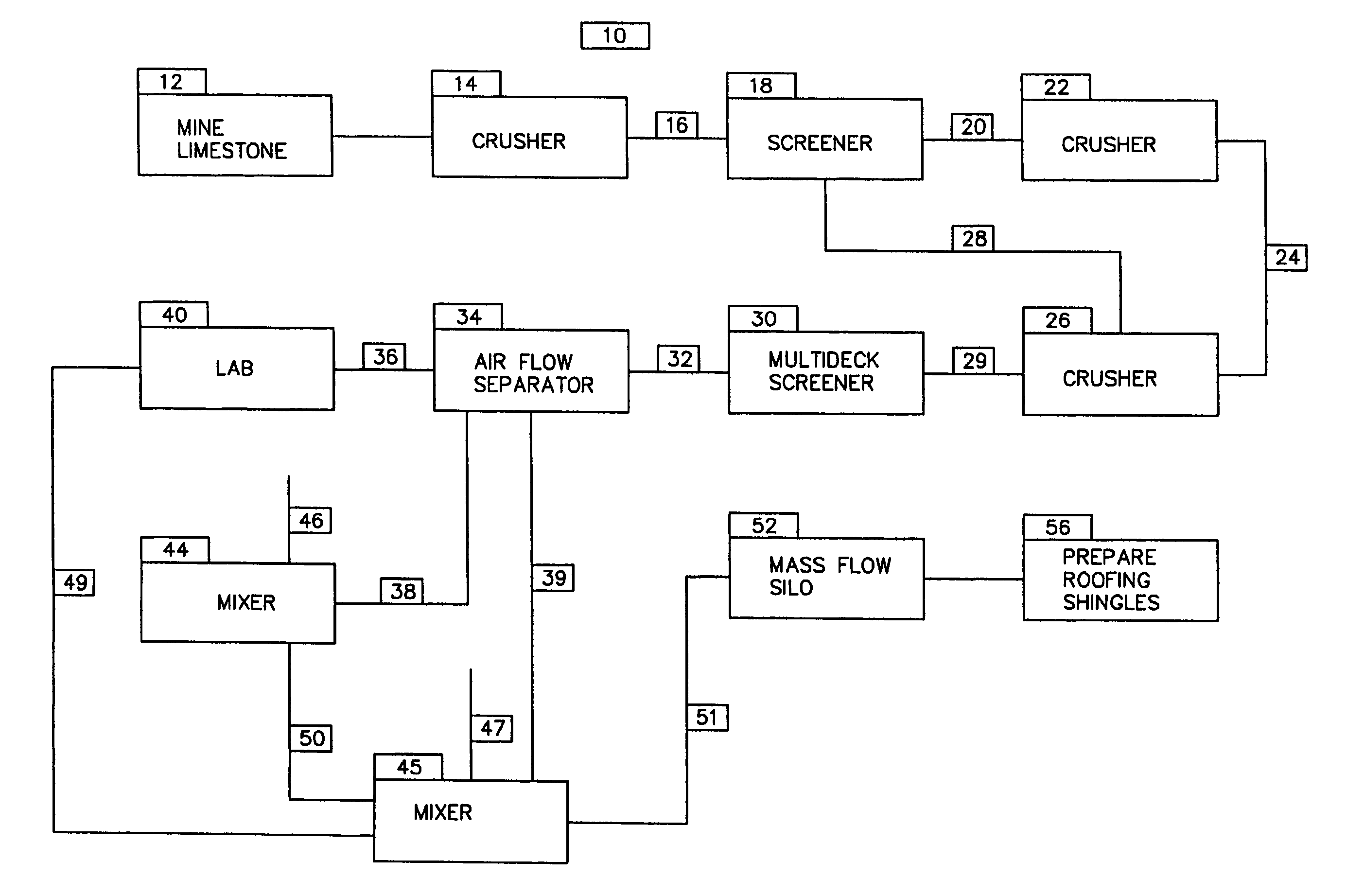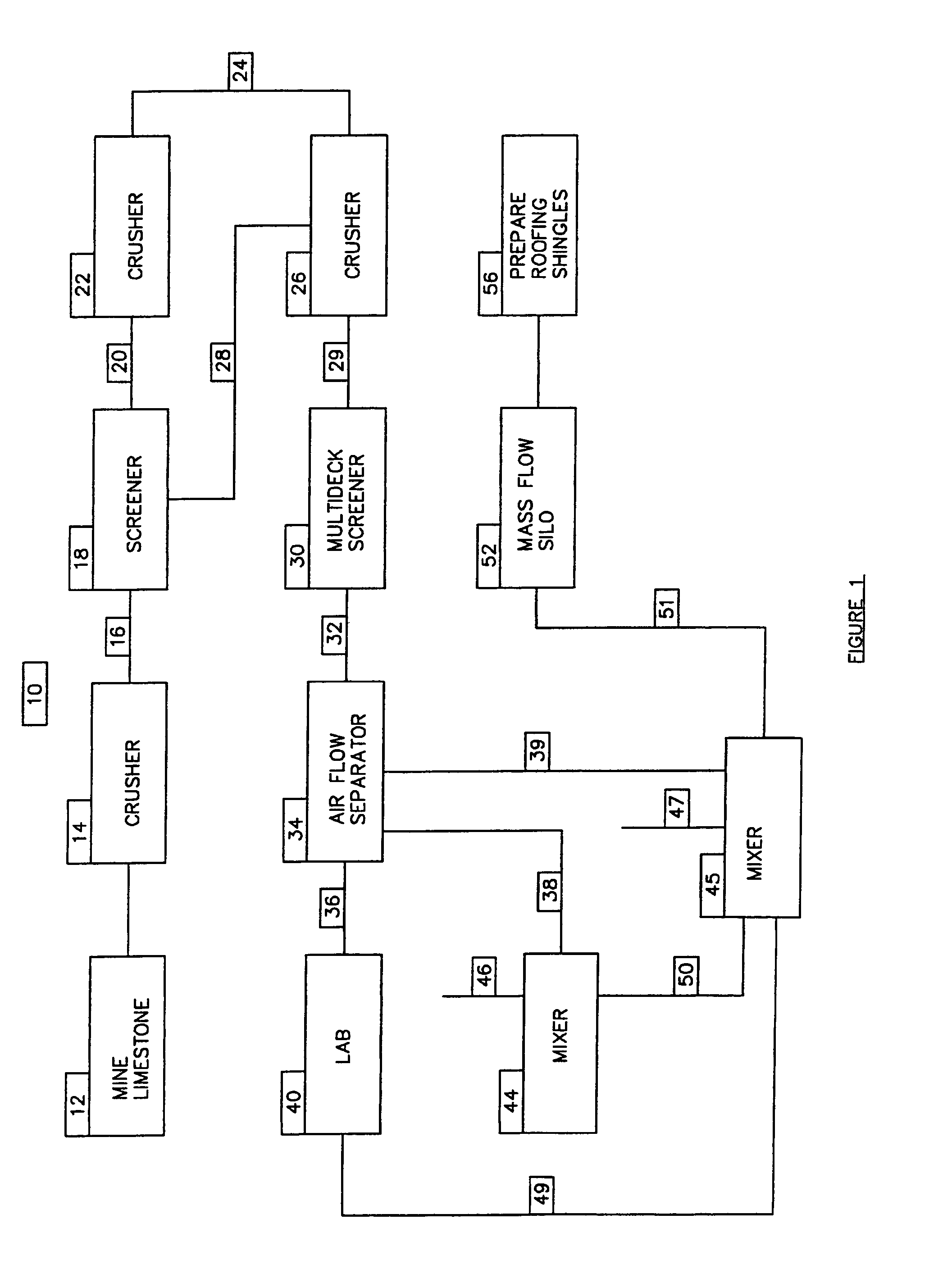Mineral composition
a technology of mineral composition and composition, applied in the field of mineral composition, can solve the problems of dna modification (mutagenesis), damage to cellular structures (especially membranes), and both essential and non-essential metals
- Summary
- Abstract
- Description
- Claims
- Application Information
AI Technical Summary
Benefits of technology
Problems solved by technology
Method used
Image
Examples
examples
[0183]The following examples are used to illustrate the claimed invention but are not to be deemed limitative thereof. Unless otherwise specified, all parts are by weight, and all temperatures are in degrees Celsius.
[0184]In each of the following examples, roofing granules were used to make a sample shingle, and the sample shingle was then tested for granule adhesion in accordance with ASTM Standard Test 4977-3. The procedure for making the test samples is described hereinbelow.
[0185]The test samples used to determine the adhesive characteristics of the coated limestone granule particles were constructed using a petroleum-based roofing asphalt manufactured by the Hunt Refining Company of Tuscaloosa, Ala. This asphalt had been oxidized by blowing with air at a temperature of approximately 500 degrees Fahrenheit, to achieve a final Ring & Ball Softening Point of 215 degrees Fahrenheit (as determined by ASTM D 36) and had a Needle Penetration of between 15 decimillimeters at 77 degrees...
examples 1-11
[0194]In the experiments described in Examples 1-11, ten different variants of treated limestone granule shingle specimens and one control specimen were tested upon completion of the fabrication of the test samples and after one week of moist storage to determine the relative granule rub-loss amounts under ASTM D-4977-03. For each set of conditions, rub loss results are reported for both un-aged samples, and aged samples (the aged samples being those that had been subjected to a water quench and stored in an un-dried state for one week.).
[0195]The limestone roofing granules used in these experiments of Examples 1-11 were obtained from the Franklin Industrial Mineral Corporation of Nashville Tenn. as “limestone headlap granules.” They had a particle size distribution such that at least about 80 weight percent of said granules had sizes in the range of from about 600 to about 1400 microns, and less than about 4 weight percent of said headlap granules were smaller than 250 microns. The...
PUM
| Property | Measurement | Unit |
|---|---|---|
| sizes | aaaaa | aaaaa |
| weight percent | aaaaa | aaaaa |
| weight percent | aaaaa | aaaaa |
Abstract
Description
Claims
Application Information
 Login to View More
Login to View More - R&D
- Intellectual Property
- Life Sciences
- Materials
- Tech Scout
- Unparalleled Data Quality
- Higher Quality Content
- 60% Fewer Hallucinations
Browse by: Latest US Patents, China's latest patents, Technical Efficacy Thesaurus, Application Domain, Technology Topic, Popular Technical Reports.
© 2025 PatSnap. All rights reserved.Legal|Privacy policy|Modern Slavery Act Transparency Statement|Sitemap|About US| Contact US: help@patsnap.com



